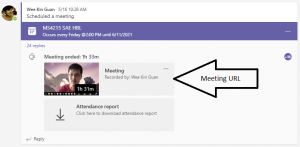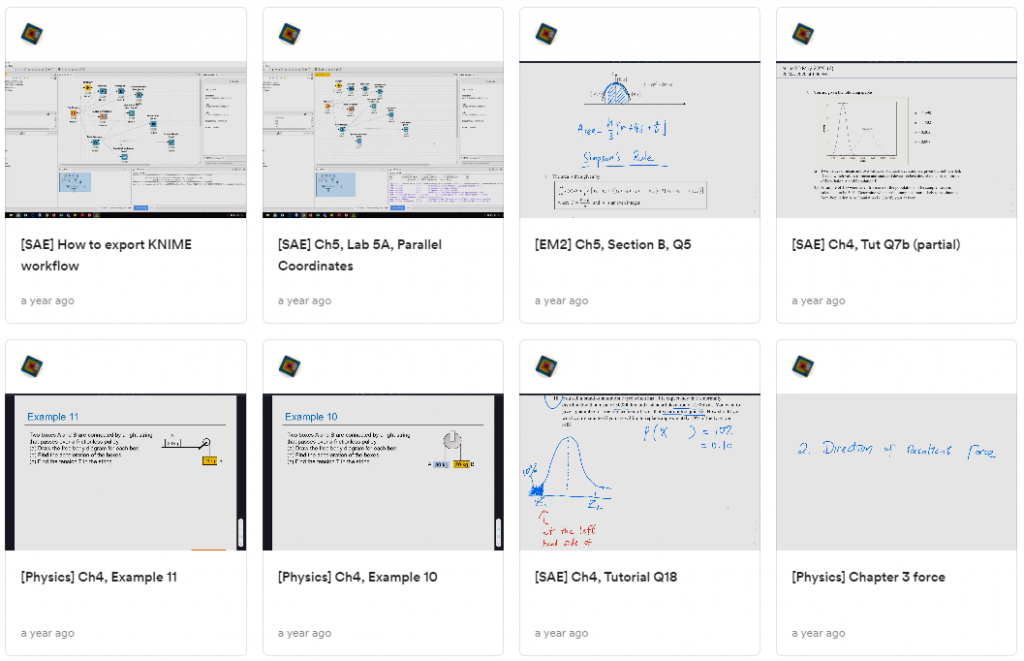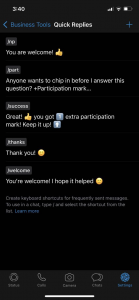Just-in-time Learning in a Mathematics Module
Contributed by Wee Kin Guan, Lecturer (Singapore Polytechnic), for SingTeach Virtual Staff Lounge
It has been over one year since COVID-19 pandemic affected every aspect of our lives. As of the time of writing, we are currently at Phase Two (Heightened Alert) in which we need to work and learn from home by default. Home-based learning (HBL) is implemented again for all primary, secondary and junior college students, as well as those from Millennia Institute and special education schools. Institutes of higher learning will convert more classes to online learning where possible (Linette Lai, 2021).
I recently shared two tips to engage online learners in a mathematics module (Wee, 2020) in the Virtual Staff Lounge on SingTeach. While the two tips are still useful in my online lesson, I am constantly seeking new ways to engage my learners in the subject matter. As the profiles of polytechnic students widely vary in terms of demographic background, financial status and academic abilities, they might face hurdles in achieving what they intended to learn in a classroom setting, be it traditional face-to-face or virtual ones. Over the last year, I encountered students who are forced to share a single laptop with siblings, students who need to do food delivery to make ends meet for the family, and students who have spotty Internet connection at home. The implementation of HBL exacerbates this “digital divide” problem faced by lower-income families (Lee & Yeo, 2020; Tay & Choo, 2021).
As an educator who observes such issues amongst his students, I aim to adapt and improvise my teaching strategies to overcome these constraints. In addition to scheduled tutorials, I also apply an approach called “just-in-time learning” to enhance my teaching of mathematics. Just-in-time learning is an approach focused on meeting the learner’s need when it arises, rather than pre-scheduled education sessions that occur regardless of the immediacy or scope of need (Brandenburg & Ellinger, 2003).
When my students have the window of opportunity to study, for example, when it is their turn to use the shared laptop or when they end their food delivery shift, they will have the necessary resources and communication channel to learn effectively.
Just-in-time learning often entails short online videos, targeted e-learning and other formats of learning. Furthermore, the timeliness and relevance of the content help the knowledge retention by the learners. Below, I would like to share two simple and inexpensive strategies to provide just-in-time learning to my students in an engineering mathematics module.
1. Lesson recording and short supplementary video
I ensure all online lessons are recorded and reassure my students that they can always refer to the recordings should they need to revise certain topics in the future. Most of the online conference software is able to record the meeting, including Zoom and Microsoft Teams. For the latter, which our school officially adopts, the meeting recording can be easily streamed via an auto-generated URL as shown in figure 1.
Another useful platform that is free to all teachers and educators is Loom. I can elaborate on a difficult example or a tutorial question, record the screen and share the URL to my students with a click. I mostly use this to quickly explain a problem on my iPad and share the recording URL to my students when they ask me a question over email or message (see figure 2). An added benefit is that I can share the same URL immediately to another student if he or she asks the same question. Both ways allow me to provide just-in-time learning to the students whenever they need it.
2. Quick Q&A using online communication tool
We have many communication tools at our fingertips such as email, online forum and discussion board, let alone myriads of apps and websites that enable instant text and video messaging. For instance, smartphone apps such as WhatsApp and Telegram are very popular. Personally, I have been using WhatsApp Business to communicate with my students. Although WhatsApp Business was designed for small business owners, I find that the functions provided are very suitable for teachers and educators to communicate with their students. There are two main benefits:
-
- Personal phone number is not needed. I set up my business account using my office line in no time. Within the app, I also set up my profile with “business hours” so that my students and parents know when I am available (see figure 3). When I receive a message outside of the business hours, the app automatically sends a pre-configured message to the sender.
- WhatsApp Business provides additional features such as Quick Replies, Labels and Automated Messages. By setting up a few commonly used replies and phrases, I am able to respond to students’ questions and encourage group participation very quickly (see figure 4).
- Personal phone number is not needed. I set up my business account using my office line in no time. Within the app, I also set up my profile with “business hours” so that my students and parents know when I am available (see figure 3). When I receive a message outside of the business hours, the app automatically sends a pre-configured message to the sender.
With the handy annotation tool in the app, I can sketch and draw on students’ work to provide formative feedback almost instantaneously. This platform also provides another avenue to evaluate students’ participation and engagement with the module beyond the classroom.
In short, teachers and educators do not require fancy equipment nor long hours of planning to carry out just-in-time learning for our students. Students are able to learn and retain the knowledge better if the information and assistance is presented to them in a timely manner.
References
Brandenburg, D. C., & Andrea, D. E. (2003). The future: Just-in-time learning expectations and potential implications for human resource development. Advances in Developing Human Resources, 5(3), 308–20. Retrieved from https://doi.org/10.1177/1523422303254629
Lai, L. (May, 2021). S’pore schools to start full home-based learning from May 19 amid spike in Covid-19 cases. The Straits Times (May 16, 2021). Retrieved from https://www.straitstimes.com/singapore/parenting-education/spore-schools-to-start-full-home-based-learning-from-may-19-amid-spike
Tay, M. L., & Clara, J. E. C. (2021). Digital Adaptation and Educational Support : Challenges of Low-Income Families in Singapore during the COVID-19 Pandemic. Retrieved from https://dr.ntu.edu.sg//handle/10356/147209
Lee, V., & and Yeo, S. (April, 2020). How home-based learning shows up inequality in Singapore – A look at three homes. The Straits Times (April 18, 2020). Retrieved from https://www.straitstimes.com/lifestyle/how-home-based-learning-hbl-shows-up-inequality-in-singapore-a-look-at-three-homes
Wee, K. G. (December, 2020). Two tricks to engage online learners in a Mathematics module. SingTeach Virtual Staff Lounge (December 4, 2020). Retrieved from https://singteach.nie.edu.sg/two-tricks-to-engage-online-learners-in-a-mathematics-module/.










